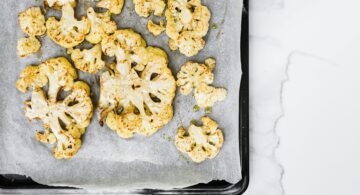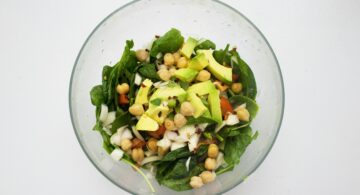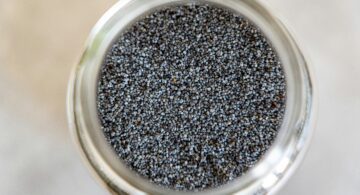Why Japanese Women Almost Never Worry About the Symptoms of Menopause – A Natural Solution
In fact, they don’t even have a word for hot flashes…
Menopause is a word that generally makes people cringe— both men and women.
Women – because they have to go through the discomfort of hot flashes, night sweats, muscle fatigue, dehydration, insomnia or restlessness. Because they lose the ability to think straight, and sometimes even acquire the dreaded paunch of a spare tire in the midsection. Of course, there are the classic symptoms of menopause, such as irritability, mood swings, or becoming anxious are all noteworthy facts of this mid-life phenomenon.
Men – because their women are irritable and yell at them.
*Author’s note: Dear Ladies, I don’t mind you yelling at me. It probably makes you feel a little better and I’m more than willing to do anything I can to help relieve the uncomfortable symptoms brought on by your changing bodies. Just know that I’ll always be here for you and you don’t look a second older than that earth moving day when my eyes first feasted upon you.
Here’s a little news flash for you guys – there’s also a male menopause (there’s a gender joke in there somewhere) that has to do with a drop in testosterone. So, wipe that smug little smirk-of-superiority from your lips and be supportive!
And a great way to be supportive to any woman in your life going through this trying time is to give them good, solid, healthy suggestions for putting discomfort behind them so they can feel happy, healthy, and free from aches of mind, body, and spirit…
The secret is in Asia…
But, you won’t have to move to Japan to take advantage of this menopause mauling miracle!
You see, in Asia – specifically Japan – most women don’t worry about hot flashes or night sweats – or any of the other symptoms associated with menopause.
There’s a very good reason: it’s their diet.
First, the most common symptom of menopause is the hot flash.
Hot flashes, or vasomotor flushes, are intense feelings of heat and sweating, especially around the face and neck areas. Hot flashes can affect 50–85% of women – up to 20 times a day.
Hot flashes are of particular concern because they occur in the premenopausal stages, during, and even after the “change” has fulfilled its dastardly obligation.
It all starts with a dramatic drop in estrogen levels
Once a woman reaches a certain age, usually around 51 — but can start earlier or later depending on the woman — menopause signifies the end of fertility. It begins with a significant drop in estrogen levels and is marked by irregular periods and a decline in egg production.
You can’t avoid it. You can’t stop it. So if you must deal with it, why not make it as easy as possible? A change in your diet could work wonders…
Discover the natural wonders of Asian food remedies
Instead of the high animal protein diets we westerners take in, Japanese women eat more vegetable proteins – and they’ve eaten this way for centuries.
For example: instead of processed flour noodles like our spaghetti and macaronis, they use a variety of healthier alternatives in their noodles. Somen are thin, wheat noodles primarily served chilled during the summer months. They can be dipped in a refreshing sauce mixed with shredded ginger or topped with healthy vegetables. Harusame (cellophane noodles) are bean noodles used for cucumber soy-sauce salads, or mixed with apple for a healthy, sweeter salad treat.
Also, try healthy veggie noodles – noodles made from zucchini, or spinach. They’re packed with iodine, protein, vitamin A, and iron to help control unruly menopausal symptoms. Now, the might be hard to find…check out your local health food store or you can order online.
Best of all – these noodles are flavorful right out of the kettle. The toppings compliment them but they can be enjoyed “in-the-buff” too!
This healthy way of eating has earned Japan some of the highest accolades any world cuisine can get from the Michelin Guide – an international food book that evaluates the foods countries are famous for with a prestigious star rating system. To date, Tokyo has earned more stars than New York, Paris, London, Hong Kong and Los Angeles combined.
Japan uses many different foods to heal, strengthen the body’s systems and successfully battle disease and ailments. Best of all — to beat the symptoms of menopause — you won’t need to make a trip to Tokyo because…
These foods can be found right here – at your local grocer or Asian specialty market
In a moment, you’ll see specific recipes that have helped many women cope with the most debilitating characteristics of this natural – but annoying – change of life.
But first, here are just a few quick and easy foods proven to fight menopause and block its merciless swats on your well being.
- Oh soy o’ me-oh – Soy is an excellent food source for relief of hot flashes. Japanese women eat about 24 pounds of soy products annually, compared with our paltry 3 pounds per annum here. See, soy contains estrogen-esque qualities that help to stop hot flashes. Since a drop in estrogen is what causes them in the first place, soy products act as a natural hormone replacement therapy. Try soy nuts, tofu, and tempeh. Soy also contains isoflavones that work to prevent bone loss (osteoporosis) and help to lower cholesterol. Just one organic soy product per day has been shown to significantly reduce hot flashes and level off mood swings.
- Kick it to the herb – For over 2500 years, herbs have been used to treat illness, disease, and common health problems. So, it’s no wonder they make their way here to help soothe hot flashesand the palpitations that go along with them. Some of these are:
- Ginseng
- Dong quai
- Motherwort
- Gotu kola
Look for them as organic, herbal extracts that can be added to your favorite beverage or you can also buy ready-made tea bags. 250 milligrams 5-6 times daily should do the trick.
- Eat your sea veggies – It’s been proven that dehydration is a big contributor to hot flashes– both in frequency and duration. So, drinking lots of water (up to 2 quarts a day) serves to replenish lost fluids during hot flashes through sweating. Ever feel drained or weak after a good sweat? This is due to a loss of electrolytes. Drinking lots of water helps, but it’s the electrolytes that your cells draw essential fluids from and hydrate needy tissues. Sea vegetables are a great source of electrolytes.
- Try some nori, which are thin, dry sheets of seaweed most commonly used in sushi rolls.
- Or, dulse (sea parsley) can be added to soups and stews for a tasty, vitamin rich alternative to your typical garnish.
- Also, check out kombu, a type of kelp that’s dried and tastes like bacon. It’s a queen-sized source of vitamins, protein, calcium, carotene, and phytohormones.
Both sea vegetables and soy products contain phytoestrogens. These are basically all natural plant hormones that serve to imitate a woman’s own estrogen.
They serve as natural, hormone therapy – without dangerous side-effects
Phytoestrogens turn into soluble hormonal estrogen, quietly replacing what’s lost in the time leading up to and during menopause. Hormone replacement therapy is a commonly prescribed treatment for menopause, but usually causes side-effects ranging from annoying to downright deadly. Some of these are:
- Headaches
- Weight gain
- Nausea
- Breast pain
The more deadly side-effects can include:
- Breast cancer
- Blood clotting
- Heart disease
- Stroke
But, you won’t have to worry about these when you choose the natural, healthy alternative of phytoestogens as a safe, reliable way to balance your hormones during menopause.
Recipes for life
We’ve talked about some of the ancient foods used to treat menopause symptoms in Japan. Now, here are a couple delicious recipes that have proven their benefits to women coping with their life change.
Japanese Cucumber Salad
- 2 medium cucumbers or one large
- ¼ cup rice vinegar
- 1 tsp organic, raw sugar
- ¼ tsp salt
- 2 tbsp toasted sesame seeds (rich in phytoestrogens)
- Harusame noodles (to taste)
What to do
- Peel cucumber, creating alternating green stripes. Slice in half length-wise and remove seeds. With a sharp knife, carefully cut into thin slices. Pat dry with paper towel to remove excess moisture.
- Combine sugar, salt, and vinegar in bowl and stir until dissolved. Add cucumber and sesame seeds. Toss well.
- Top with harusame noodles and serve immediately.
This is a perfect, cooling side-salad on a warm, summer day.
*Courtesy http://www.eatingwell.com/recipes/japanese_cucumber_salad.html Harusame twist by Jeff Saunders
Nori Sushi Rolls
- 1 ½ cups sushi rice
- 1 tbsp salt
- 1 tbsp mirin (optional – a type of rice wine)
- 3 tbsp rice vinegar
- 1 tbsp organic honey
- 1 cup lightly toasted sesame seeds (dry pan toast)
- 3 sheets toasted nori
- 3 tbsp wasabi (optional)
Filling ideas
- About 8-10 cooked, shelled shrimp
- About ½ cup crab meat
- About ½ cup smoked salmon, cut into strips
Sauces and accompaniments
- Dark soy sauce
- Pickled ginger
- Wasabi paste
- Fish sauce
What to do
- Run rice under cold water in a sieve until water runs clear. Drain well. Put rice into a large pan, cover with 2 cups water and add salt. Cover tightly and bring to a boil for 1 minute. Turn heat to simmer and cook rice until all water is absorbed (about 15 minutes). Remove from heat and set aside to stand – still covered – for 10 minutes.
- While rice is standing, mix mirin (optional), rice vinegar and honey in a small pan. Heat gently. Turn rice onto a large, flat plate and sprinkle with the sesame seeds. Fold together with warm dressing. Cool rice with a damp cloth until it stops steaming. Cover rice with cloth.
- Put a sheet of nori shiny side down with perforations running vertically on a sushi mat (or double-layer, greaseproof paper on a tea towel) and spread a third of the rice mixture evenly over nori leaving a clear margin up top.
- Lay filling in a horizontal line just off center on the end closest to you. Next, spread the optional wasabi paste thinly and evenly over exposed rice. Fold the top over and tightly roll the whole thing together with the mat or towel.
- With a bit of water, dampen the bare edge of the nori so it sticks and leave it sit for a few minutes. Then gently unroll the mat or towel. Cut roll into about 10 pieces and repeat procedure for the other 2 fillings.
Serve on side plates with a little pickled ginger, a smear of wasabi, and little bowls of soy and fish sauces for dipping.
*Courtesy http://www.saga.co.uk/homeandlifestyle/Food/Recipes-for-health-conditions/sushi-rolls.asp
Wrap up
We understand that Japanese cuisine may not be everybody’s bag…so here a just a few more food ideas to keep your cool and balance your emotions so you can stay off of the menopause roller coaster.
Fruits and vegetables:
.
Other foods high in phytoestrogens are kidney, navy, pinto, red, small white and mung beans. Chickpeas, split peas, peanuts and clover sprouts also make the list.
Eat more pears, plums, strawberries, grapes, apples an tomatoes. It’s important to keep your fiber up-to-snuff to get through this scott-free. Also, take a liking (if you don’t already) to green, leafy vegetables, asparagus, beets, cucumbers, carrots, wheat, and onions. All these are famous for taking the bite out of menopause with natural, healthy vitamins, minerals, fiber, and the all important phytoestrogen that can turn into soluble estrogen naturally – with no adverse side-effects of common hormone replacement therapy.
Let’s not forget our friends – legumes. Here’s a tasty “wrap” recipe that’s help keep your cool when your body wants to raise the mercury…
Easy, Breezy Bean Wrap
- 1 jar mango salsa
- 2 cups cooked brown rice
- 4 (15 ounce) cans black beans
- 2 (15.5 ounce) cans pinto beans
- 12 ounces whole kernel corn (Frozen works great, just make sure to thaw it first. Learned that the hard way!)
- 1 (10 ounce) can diced tomatoes and green chiles
- 16 (10 inch) spinach tortillas
- 1 pound shredded pepper-jack cheese (or try shredded colby-jack if you don’t enjoy the kick of a good pepper)
What to do
- Place black beans and pinto beans into a colander or strainer and rinse. Add corn and diced tomatoes with green chilies; toss to mix. Transfer to a large bowl, and mix in rice.
- Divide the mixture evenly among the tortillas, sprinkle on the cheese, and roll up. Heat in oven just until cheese melts. Wrap will be luke-warm. If you like yours crispy, do all the stuff above except place your wrap in an oiled skillet. Sear a bit on both sides to crisp it up and melt the cheese.
- Serve with mango salsa and enjoy!
That’s 16 servings so cut recipe as needed or bag it and save it for future meals.
In addition, to healthy eating through menopause, it’s also important to get plenty of exercise and stay hydrated. To keep your cool is to keep all your systems balanced and functioning, naturally – the way nature intended.
Remember – Japanese women don’t even have a translation for hot flashes. You don’t need one either.























